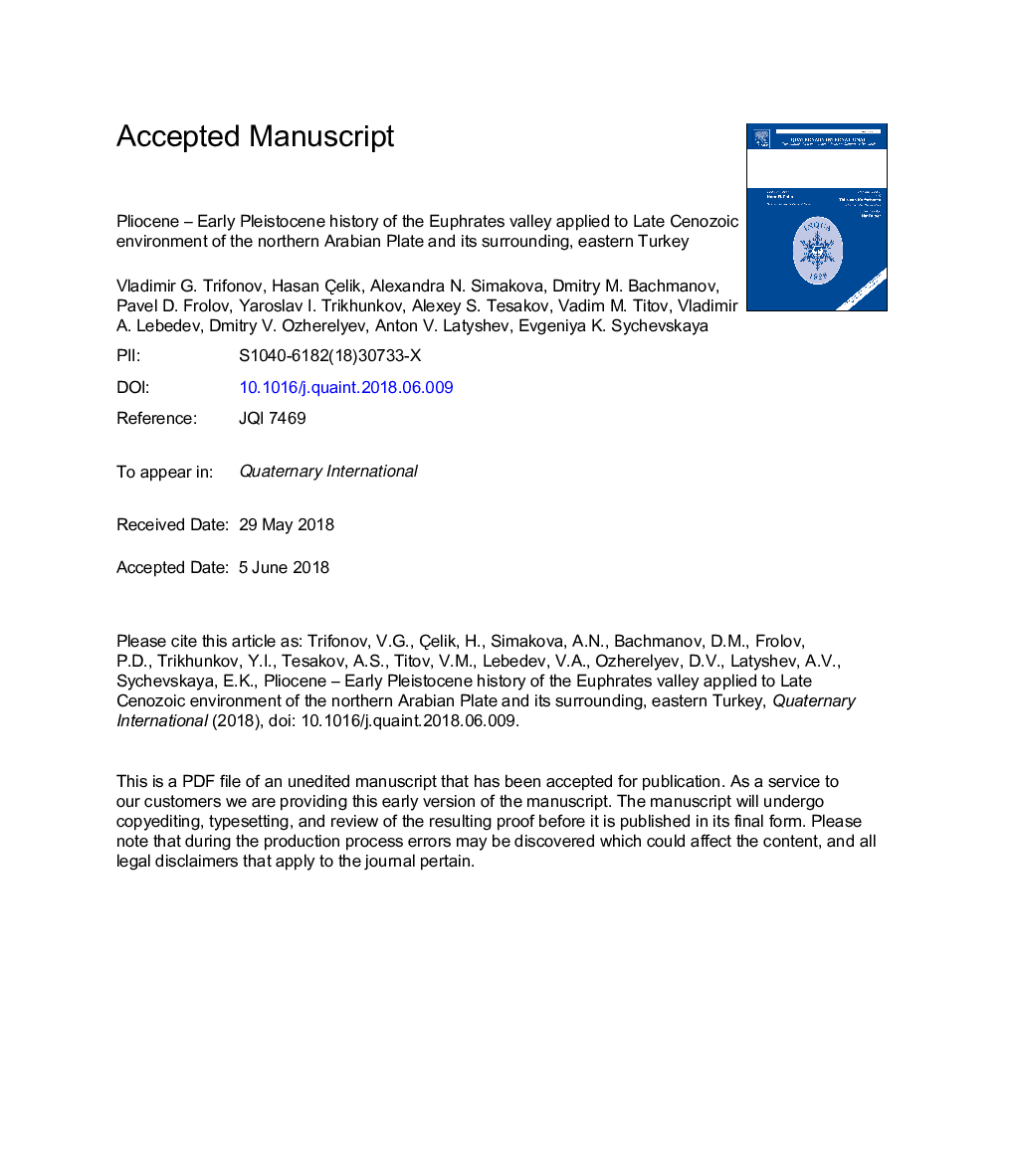| کد مقاله | کد نشریه | سال انتشار | مقاله انگلیسی | نسخه تمام متن |
|---|---|---|---|---|
| 12132198 | 944683 | 2018 | 91 صفحه PDF | دانلود رایگان |
عنوان انگلیسی مقاله ISI
Pliocene - Early Pleistocene history of the Euphrates valley applied to Late Cenozoic environment of the northern Arabian Plate and its surrounding, eastern Turkey
ترجمه فارسی عنوان
پیلوئن - تاریخ اولیه پیلوستوژن دره فرات به محیط زیست سنوزوئیک شمالی عربی عربی و اطراف آن، شرق ترکیه
دانلود مقاله + سفارش ترجمه
دانلود مقاله ISI انگلیسی
رایگان برای ایرانیان
کلمات کلیدی
موضوعات مرتبط
مهندسی و علوم پایه
علوم زمین و سیارات
زمین شناسی
چکیده انگلیسی
The Pliocene-Quaternary paleogeography of the Euphrates River valley changed due to sinistral movements on the East-Anatolian Fault Zone (EAFZ) and the Taurus Ridge rise by movements on the South-Taurus Thrust. Evidence of these changes is based on studies of the Pliocene-Quaternary deposits of the Euphrates River basin to the north and to the south of the Taurus Ridge and the Late Cenozoic deformation including offsets on the EAFZ. Combination of methods was used to date the Pliocene-Quaternary deposits. It includes geological and geomorphic analysis and correlation of sections, determination of remanent magnetization, paleontological and archaeological finds, pollen analysis, and K-Ar dating of volcanic rocks. To the north of the Taurus Ridge, the Late Miocene tectonic depressions were filled by lakes connected by braided streams. In the Early Pliocene, the Euphrates and Murat river valleys formed and the Euphrates flew to the south westwards of its recent position, via the graben-like trough of the Sultan-Suyu River valley and farther to the Erikdere that are recent Euphrates tributaries. The flow was interrupted later because of some desiccation and rise of the Taurus Ridge. The flow recommenced in the end Gelasian - early Calabrian via the Göksu-Ãayı and Erikdere valleys consecutively and was interrupted again. At the end of Calabrian (â¼0.8-0.9 Ma), the Euphrates waters found the recent way via the Taurus Ridge and the former upstream bottoms of the Euphrates and its tributaries valleys became a vast upper terrace. After this, the Taurus Ridge rose by more than 330â¯m. Lower terraces were formed because of the tectonic uplift that was more intense to the north of the Taurus Ridge (0.13-0.16â¯mm/year), than to the south of it (0.1â¯mm/year). The new-formed segment of the Euphrates valley was offset on the EAFZ at 12â¯km that gives the slip rate of 13-15â¯mm/year.
ناشر
Database: Elsevier - ScienceDirect (ساینس دایرکت)
Journal: Quaternary International - Volume 493, 10 November 2018, Pages 137-165
Journal: Quaternary International - Volume 493, 10 November 2018, Pages 137-165
نویسندگان
Vladimir G. Trifonov, Hasan Òªelik, Alexandra N. Simakova, Dmitry M. Bachmanov, Pavel D. Frolov, Yaroslav I. Trikhunkov, Alexey S. Tesakov, Vadim M. Titov, Vladimir A. Lebedev, Dmitry V. Ozherelyev, Anton V. Latyshev, Evgeniya K. Sychevskaya,
